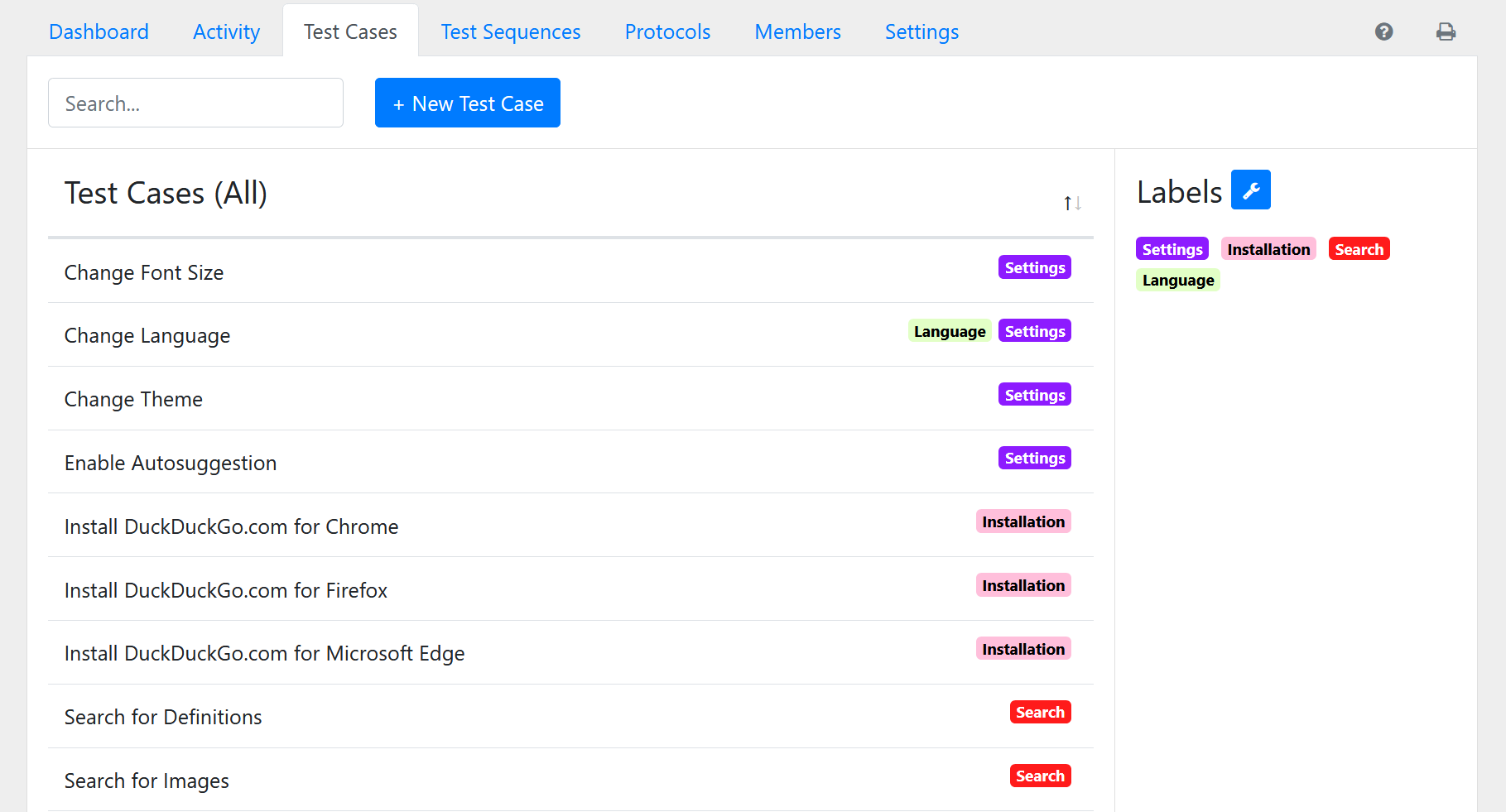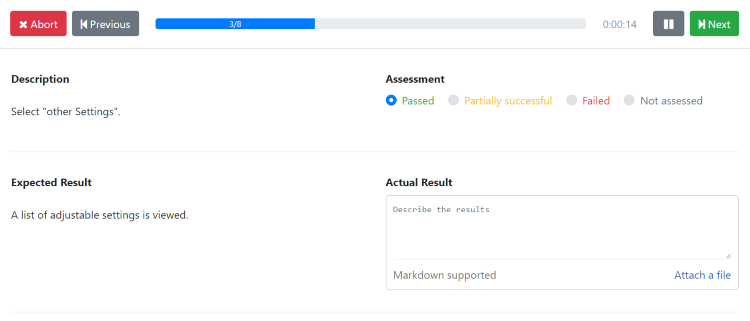System testing is fun again!
- SystemTestPortal helps you organizing, executing and analyzing system tests
- - Self-hosted, lightweight and FREE.

Organize
- Specify each test step
- Group multiple test cases into testsequences
- Pre-Conditions supported as well

Execute
- Execute tests step by step
- Rate test results, record time and more

Analyze
- Analyze Failures easily
- Mighty filters allow to deal even with dozens of test protocols easily

Copyright (c) 2017-2020 systemtestportal.org
Template by Bootstrapious. Ported to Hugo by DevCows

